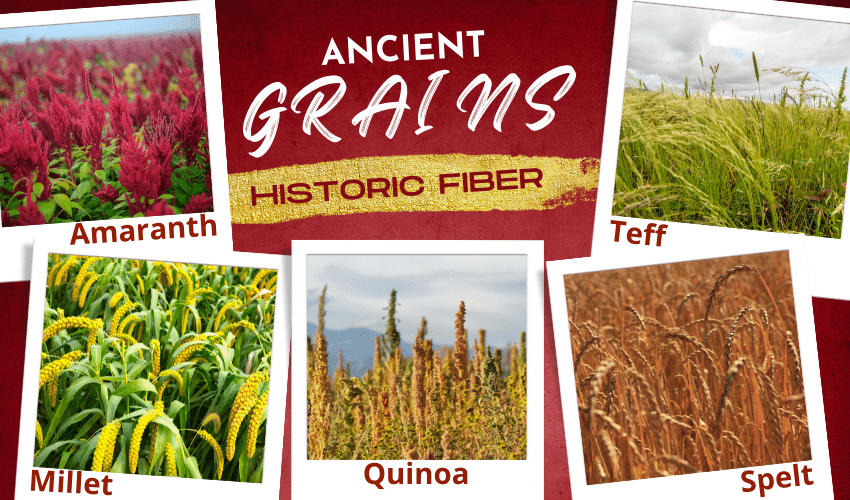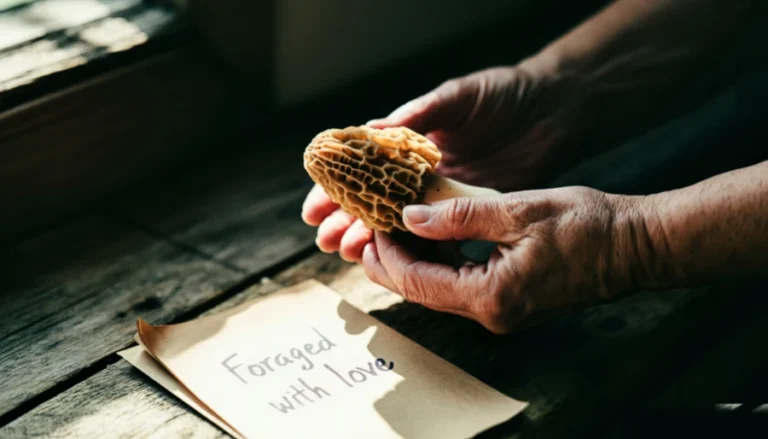The foods we eat don’t just impact our health; they also have a profound effect on the planet’s health. Every food item has a carbon footprint, representing the total greenhouse gas emissions involved in its production. Understanding which foods have the largest carbon footprints is crucial in our effort to make more environmentally conscious dietary choices.
In this article, you will learn:
- The significant carbon footprints of 20 common foods.
- Insights into why these foods are heavy on carbon emissions.
- Eco-friendlier alternatives for each food, like choosing goat meat over beef.
Let’s delve into these foods and discover how we can make a positive impact on our planet through our everyday food choices.
Beef (Beef Herd): A High Carbon Footprint Choice
The Carbon Footprint of Beef from Beef Herds
Beef, particularly from beef herds, has the largest carbon footprints among food items, standing at a staggering 99.48 kg of CO2 equivalent per kilogram. This high emission rate is due to several factors unique to cattle farming.
Why Beef Production is Carbon-Intensive
The primary reason for beef’s high carbon footprint is the methane production by cattle. Methane, a potent greenhouse gas, is emitted during their digestion process. Additionally, beef production requires significant land use for grazing and feed production, leading to deforestation and habitat loss. The entire lifecycle of beef production, from feed production to processing and transportation, contributes to its high carbon emissions.
Eco-Friendlier Alternative: Goat Meat
A more sustainable alternative to beef is goat meat. Goats have a lower carbon footprint because they require less feed and water than cattle. They’re also more adaptable to harsher environments, reducing the need for deforestation for grazing land. Moreover, goat farming generally involves more sustainable practices, making goat meat a more environmentally friendly option for red meat lovers.
Dark Chocolate: A Sweet with a Bitter Environmental Impact
The Carbon Footprint of Dark Chocolate
Dark chocolate, a favorite indulgence for many, has a surprisingly high carbon footprint, averaging 46.65 kg of CO2 equivalent per kilogram. This significant impact stems from the various stages of chocolate production.
Why Dark Chocolate is High in Carbon Emissions
The production of dark chocolate is resource-intensive, starting from the cultivation of cacao trees. These trees require a specific climate and often result in deforestation in tropical regions to create cacao plantations. Furthermore, the processing of cacao beans into chocolate is energy-intensive, adding to its carbon footprint. Additionally, the transportation of chocolate, often over long distances from the tropics to consumers worldwide, further increases its emissions.
A More Sustainable Option: Locally Produced Chocolate
Choosing locally produced chocolate can be a more sustainable option. Local chocolate may involve shorter transportation distances and can also support smaller-scale, more sustainable farming practices. While it may not significantly reduce the carbon footprint, it helps in promoting more environmentally friendly practices in the chocolate industry.
Lamb & Mutton: A Hefty Environmental Impact
The Carbon Footprint of Lamb & Mutton
Lamb and mutton carry a significant environmental impact, with a carbon footprint of 39.72 kg CO2 equivalent per kilogram. This places them among the higher ranks in terms of carbon-intensive food items.
Why Lamb and Mutton are Carbon-Intensive
Sheep farming, like cattle farming, contributes to high greenhouse gas emissions, primarily methane, through enteric fermentation in the animals. Additionally, sheep require extensive grazing land, which often leads to land degradation and deforestation. The energy used in the entire lifecycle of lamb and mutton production, from farm to table, also adds to their overall carbon footprint.
Eco-Friendlier Alternative: Plant-Based Meat Substitutes or Goat
For those looking to reduce their carbon footprint, plant-based meat substitutes offer a viable alternative to lamb and mutton. These products mimic the taste and texture of meat but are made from plant sources, resulting in significantly lower carbon emissions. The production of plant-based meats usually requires less land and water and generates fewer greenhouse gases compared to traditional sheep farming.
Of course, if you’d rather your meat be meat, consider goat or rabbit for a more earth-friendly alternative.
Beef (Dairy Herd): Another High Carbon Contributor
The Carbon Footprint of Beef from Dairy Herds
Beef sourced from dairy herds also contributes significantly to carbon emissions, with a footprint of 33.30 kg CO2 equivalent per kilogram. While slightly lower than beef from beef herds, it remains a considerable concern in terms of environmental impact.
Why Dairy Beef is Carbon-Intensive
Dairy cattle, like beef cattle, produce methane through enteric fermentation. Furthermore, the process of managing dairy herds, which includes feed production, milking, and processing dairy products, requires substantial energy and resources. When dairy cows are no longer productive for milking, they are often processed for beef, adding to the carbon footprint of the dairy industry.
A Lower Carbon Alternative: Chicken
As an alternative to beef from dairy herds, chicken is a more environmentally friendly option. Chicken farming has a significantly lower carbon footprint, with reduced methane emissions compared to cattle. Additionally, chickens have a faster growth rate and require less feed and land, making chicken a more sustainable choice for consumers looking to reduce their environmental impact.
Coffee: A Popular Beverage with a High Environmental Cost
The Carbon Footprint of Coffee
Coffee, one of the most beloved beverages worldwide, comes with a carbon footprint of 28.53 kg CO2 equivalent per kilogram. This significant footprint is a result of the entire process from coffee bean cultivation to the final product reaching the consumer.
Why Coffee Production is Carbon-Intensive
The cultivation of coffee beans is often linked to deforestation, especially in tropical regions where coffee grows best. This not only contributes to habitat loss but also to carbon emissions from land use change. Additionally, the processing of coffee beans is energy-intensive, and the long-distance transportation of coffee from growing regions to consumers around the world further adds to its carbon emissions.
A More Sustainable Option: Locally Sourced Coffee
To minimize the environmental impact, choosing locally sourced coffee or brands that prioritize sustainable farming practices can be beneficial. This may include supporting fair trade coffee or brands that use shade-grown coffee beans, which help preserve natural habitats and reduce the need for deforestation. While it’s challenging to find a direct low-carbon alternative, these choices can help make coffee consumption more sustainable.
Prawns (Farmed): A Seafood with Substantial Emissions
The Carbon Footprint of Farmed Prawns
Farmed prawns carry a high environmental load, with a carbon footprint of 26.87 kg CO2 equivalent per kilogram. This is primarily due to the intensive farming practices associated with prawn cultivation.
Why Farmed Prawns are Carbon-Intensive
Prawn farming often involves the clearing of mangroves and other coastal habitats, which are crucial for carbon sequestration. The farming process itself is resource-intensive, requiring large amounts of feed and energy to maintain prawn pools. Additionally, the waste produced in prawn farms can lead to water pollution, further impacting the environment.
A More Sustainable Alternative: Wild-Caught Prawns
Opting for wild-caught prawns can be a more sustainable choice. Wild prawns generally have a lower carbon footprint, as they don’t require the same level of resource input as farmed prawns. However, it’s important to choose prawns that are sustainably caught to avoid overfishing and ensure the health of marine ecosystems.
Cheese: Dairy's Substantial Carbon Footprint
The Carbon Footprint of Cheese
Cheese, a staple in many diets, has a substantial carbon footprint of 23.88 kg CO2 equivalent per kilogram. This significant impact is linked to the resources required for dairy farming and industrial cheese production.
Why Cheese is High in Carbon Emissions
The production of cheese is energy and resource intensive. It starts with the high emissions from dairy farming, including methane from cows. Cheese production also requires a large volume of milk, and the process of turning milk into cheese involves additional energy for pasteurization, curdling, and aging.
A Lower Carbon Alternative: Plant-Based Cheese
Plant-based cheese alternatives, made from nuts or soy, offer a lower carbon footprint option. These alternatives bypass the resource-intensive dairy farming process and often have a significantly lower environmental impact. While the taste and texture may differ from traditional cheese, they provide a viable option for those looking to reduce their carbon footprint.
Fish (Farmed): Navigating Aquaculture's Carbon Impact
The Carbon Footprint of Farmed Fish
Farmed fish, with a carbon footprint of 13.63 kg CO2 equivalent per kilogram, present a considerable environmental impact, largely due to the practices in aquaculture.
Why Farmed Fish are Carbon-Intensive
The carbon footprint of farmed fish includes emissions from fish feed production, energy use in maintaining fish farms, and waste management. Additionally, some farming practices can lead to habitat destruction and water pollution, further contributing to their environmental impact.
A More Sustainable Option: Sustainably Sourced Wild Fish
Opting for sustainably sourced wild fish can be an eco-friendlier choice. Wild fish generally don’t require the same level of resource input as farmed fish and, if sustainably managed, can have a lower environmental impact. It’s important to look for certifications that indicate sustainable fishing practices to ensure the choice contributes positively to marine ecosystem conservation.
Pork: A Popular Meat with Environmental Costs
The Carbon Footprint of Pork
Pork has a significant environmental footprint, with a carbon emission of 12.31 kg CO2 equivalent per kilogram. This footprint is influenced by various factors in pork production.
Why Pork is Carbon-Intensive
Pork production involves methane and nitrous oxide emissions from manure management. Additionally, the feed production for pigs requires substantial land and water resources, contributing to deforestation and water usage. The processing and transportation of pork add further to its carbon footprint.
A More Sustainable Alternative: Turkey Meat
An eco-friendlier alternative to pork is turkey meat. Turkeys generally require less feed and produce fewer emissions per kilogram of meat compared to pigs. Additionally, turkey farming often involves less resource-intensive practices, making it a more sustainable choice for meat consumption.
Poultry: Comparatively Lower Carbon Footprint but Still Significant
The Carbon Footprint of Poultry
Poultry, including chicken, has a lower carbon footprint compared to red meats, at 9.87 kg CO2 equivalent per kilogram. However, it still poses environmental challenges.
Why Poultry Production is Carbon-Intensive
Poultry production contributes to carbon emissions through feed production, energy use in farming operations, and methane emissions from waste. While it’s more efficient than red meat production, the large-scale nature of poultry farming can lead to significant cumulative environmental impacts.
A Lower Carbon Alternative: Plant-Based Poultry Substitutes
Plant-based poultry substitutes offer a viable alternative with a lower carbon footprint. These products are made from plant sources and mimic the taste and texture of poultry. With advances in food technology, these alternatives have become more appealing and are a more sustainable choice for those looking to reduce their carbon footprint.
Eggs: A Staple Food with Environmental Implications
The Carbon Footprint of Eggs
Eggs, a common staple in many diets, have a carbon footprint of 4.67 kg CO2 equivalent per kilogram. This footprint is influenced by the processes involved in egg production.
Why Egg Production is Carbon-Intensive
The main factors contributing to the carbon footprint of eggs includes feed production for hens, energy used in maintaining poultry facilities, and methane and nitrous oxide emissions from manure.
On top of that, the transportation and refrigeration of eggs add to their overall environmental impact as well.
A More Sustainable Alternative: Free-Range or Organic Eggs
Opting for free-range or organic eggs can be a more environmentally friendly choice. These eggs come from hens raised in more natural conditions, often requiring less feed and resulting in lower emissions. Organic farming practices also tend to be more sustainable, reducing the environmental impact of egg production.
Rice: A Global Staple with a Surprising Carbon Footprint
The Carbon Footprint of Rice
Rice, a staple food for a large portion of the world’s population, has a carbon footprint of 4.45 kg CO2 equivalent per kilogram. This is due to specific factors in rice cultivation.
Why Rice Production is Carbon-Intensive
The cultivation of rice is particularly methane-intensive due to the anaerobic conditions of waterlogged rice paddies. Methane is a potent greenhouse gas, and its emission during rice farming significantly contributes to rice’s carbon footprint. Additionally, rice cultivation often involves significant water usage and land use.
A More Sustainable Option: Quinoa or Other Whole Ancient Grains
Alternatives like quinoa or other whole ancient grains can be more sustainable options. These crops generally require less water and emit lower levels of greenhouse gases compared to rice. Additionally, diversifying grain consumption can help reduce the environmental impact associated with rice cultivation.
Peanuts: A Nut with a Moderate Environmental Footprint
The Carbon Footprint of Peanuts
Peanuts have a relatively moderate carbon footprint, measuring at 3.23 kg CO2 equivalent per kilogram. This footprint is influenced by the cultivation and processing practices of peanuts.
Why Peanuts are Moderately Carbon-Intensive
Peanut farming involves the use of water and fertilizers, which contribute to its carbon footprint. However, peanuts have a unique advantage as they fix nitrogen in the soil, reducing the need for nitrogen-based fertilizers. The processing and transportation of peanuts, especially when they are turned into products like peanut butter, add to their overall environmental impact.
A More Sustainable Alternative: Locally Grown Nuts
Opting for locally grown nuts can be a more sustainable choice. Local nuts typically require less transportation, reducing the carbon footprint. Additionally, supporting local agriculture can promote more sustainable farming practices.
Cane Sugar: Sweetness with a Cost to the Environment
The Carbon Footprint of Cane Sugar
Cane sugar, widely used as a sweetener, has a carbon footprint of 3.20 kg CO2 equivalent per kilogram. The production process of cane sugar contributes to this environmental impact.
Why Cane Sugar is Carbon-Intensive
The cultivation of sugar cane often involves significant land use, potentially leading to deforestation and habitat destruction. The processing of cane into sugar is also energy-intensive, contributing further to its carbon footprint. Additionally, the transportation of sugar, often from tropical regions to global markets, adds to its emissions.
A More Sustainable Option: Local or Organic Sweeteners
Choosing local or organic sweeteners can help reduce environmental impact. Organic sweeteners are produced using more sustainable farming practices, which can mitigate some of the negative environmental effects. Local sweeteners, such as honey or maple syrup, can also reduce transportation emissions.
Tofu: A Low-Carbon Alternative to Meat
The Carbon Footprint of Tofu
Tofu, made from soybeans, has a relatively low carbon footprint of 3.16 kg CO2 equivalent per kilogram, making it an eco-friendlier choice compared to many animal-based products.
Why Tofu is Lower in Carbon Emissions
The production of tofu is less resource-intensive than meat production. It requires less land, water, and energy, and results in lower greenhouse gas emissions. Soybeans, the primary ingredient in tofu, are also efficient in nitrogen fixation, reducing the need for nitrogen fertilizers.
A More Sustainable Option: Locally Produced Tofu
Choosing locally produced tofu can further reduce its environmental impact. Local production often means shorter transportation distances and supports smaller, potentially more sustainable farming practices. This choice can help minimize the carbon footprint associated with tofu consumption.
Milk: A Dairy Product with Significant Emissions
The Carbon Footprint of Milk
Milk has a carbon footprint of 3.15 kg CO2 equivalent per liter. The production of milk involves various processes that contribute to this significant footprint.
Why Milk Production is Carbon-Intensive
Dairy farming is a major contributor to greenhouse gas emissions, primarily through methane produced by cows. Additionally, the production of feed for dairy cows, along with the energy used in milking operations, processing, and refrigeration, adds to the carbon emissions of milk.
A More Sustainable Alternative: Plant-Based Milks
Plant-based milks, such as almond, or soy milk offer a lower carbon footprint alternative to cow’s milk. These milks require less water and land and produce fewer emissions during their production. While the nutritional content may differ, plant-based milks can be a more sustainable choice for those looking to reduce their environmental impact.
Oatmeal: A Low-Impact Grain with Benefits
The Carbon Footprint of Oatmeal
Oatmeal, a popular breakfast choice, boasts a relatively low carbon footprint of 2.48 kg CO2 equivalent per kilogram. This makes it an environmentally friendlier grain option.
Why Oatmeal is Lower in Carbon Emissions
Oats require less fertilizer and water compared to other grains, contributing to their lower carbon footprint. They’re also often grown in cooler climates, which typically involve less intensive farming practices. The processing of oats into oatmeal is relatively energy-efficient, further reducing its environmental impact.
A More Sustainable Choice: Locally Sourced Oats
Opting for locally sourced oats can further minimize the carbon footprint. Local sourcing reduces transportation emissions and often supports more sustainable agricultural practices. Additionally, buying oats in bulk can reduce packaging waste.
Tomatoes: A Common Vegetable with a Moderate Footprint
The Carbon Footprint of Tomatoes
Tomatoes have a carbon footprint of 2.09 kg CO2 equivalent per kilogram, placing them in the moderate range for vegetable emissions.
Why Tomatoes Have a Moderate Carbon Footprint
The carbon footprint of tomatoes is influenced by the energy used in their cultivation, especially in greenhouse operations. Greenhouses often require heating and lighting, which contributes to carbon emissions. Additionally, the transportation of tomatoes, particularly when shipped long distances, adds to their environmental impact.
A Lower Carbon Alternative: Locally Grown Tomatoes
Choosing locally grown tomatoes can reduce their carbon footprint. Local tomatoes typically have shorter transportation distances and may be grown in more natural conditions, reducing the need for energy-intensive greenhouses. Seasonal purchasing also helps, as it reduces the reliance on greenhouse-grown tomatoes. Of course, you could always grow tomatoes yourself in a container garden, almost anywhere.
Wine: A Beverage with a Varied Environmental Impact
The Carbon Footprint of Wine
Wine has a carbon footprint that varies widely, but on average, it stands at 1.79 kg CO2 equivalent per liter. This footprint is influenced by the cultivation of grapes, production processes, and transportation.
Why Wine Production is Carbon-Intensive
The cultivation of grapes can be resource-intensive, requiring significant water and land use. The winemaking process itself, including fermentation and aging, consumes energy, contributing to its carbon footprint. Additionally, the packaging (especially glass bottles) and long-distance transportation of wine significantly add to its emissions.
A More Sustainable Option: Locally Produced Organic Wine
Opting for locally produced organic wine can help reduce its environmental impact. Local wines often have shorter transportation distances, and organic viticulture practices can lead to more sustainable land use. Choosing wines with eco-friendly packaging, such as recycled materials or lighter bottles, can also make a difference.
Corn/Maize: A Staple with a Small but Notable Footprint
The Carbon Footprint of Corn/Maize
Corn, or maize, a staple crop in many diets, has a relatively small carbon footprint of 1.70 kg CO2 equivalent per kilogram. However, its widespread cultivation means its overall environmental impact is significant.
Why Corn Production is Carbon-Intensive
Corn farming often involves the use of fertilizers and pesticides, contributing to greenhouse gas emissions. The large-scale monoculture of corn can lead to soil degradation and biodiversity loss. Additionally, the processing and transportation of corn products add to its carbon footprint.
A More Sustainable Alternative: Locally Grown, Organic Corn
Choosing locally grown, organic corn can be a more sustainable option. Organic farming practices reduce the use of synthetic fertilizers and pesticides, lowering the environmental impact. Local sourcing also minimizes transportation emissions associated with corn distribution.
Conclusion & Review
In this article, we’ve explored the carbon footprints of 20 common foods and offered insights into why these foods are heavy on carbon emissions. We also discussed eco-friendlier alternatives for each, aiming to help you make more sustainable food choices.
To recap, the key takeaways include:
- Understanding the high carbon footprints of popular foods like beef, dark chocolate, and coffee.
- Recognizing the environmental impacts of various agricultural and production practices.
- Learning about sustainable alternatives, such as goat meat instead of beef, and plant-based options for dairy and meat products.
Making informed choices about what we eat can significantly impact our planet’s health. By opting for foods with lower carbon footprints, we can all contribute to a more sustainable future.
As a natural next step, consider exploring a guide on how to effectively incorporate these eco-friendly alternatives into your daily diet. Such resources can offer practical tips and recipes, helping you to not only understand the importance of sustainable eating, but also to put it into practice.























